Bladder hedge
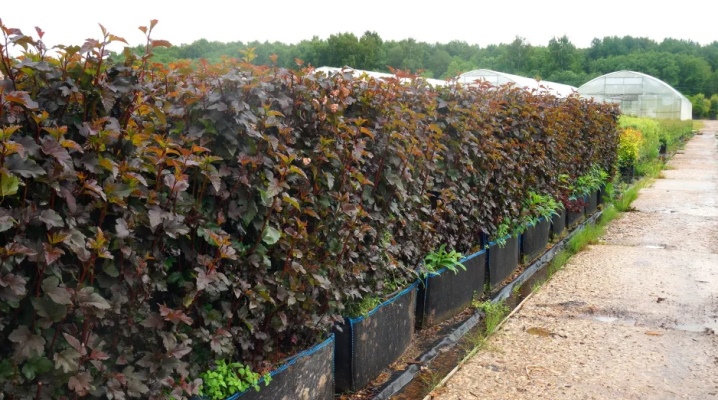
A hedgerow from a bubble plant is a beautiful and easy-to-care garden structure, which they begin to engage in after what they see from their neighbors or just on someone else's plot. This aesthetically pleasing hedge is not only a decorative component, but also serves as a barrier for strangers.
Peculiarities
The bladder hedge is a solution that has become widespread in landscape design due to its many advantages:
- it is an unpretentious shrub brought from similar climatic conditions in North America, easily adapting to a new place and endowed with a stable immunity;
- there are varieties that are found in Russian conditions, and they are no less decorative;
- for the season, the foliage changes color, and each variety has different shades;
- forming bushes by cutting, you can enhance the decorative component;
- a row of bush not only protects from prying eyes and street dust, but also adds oxygen.

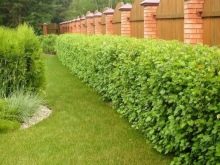

The shrub absorbs sunlight well and grows in places with constant lighting. There are several landing plans that have already been thought out and tested in practice. It remains only to decide which variety will correspond to the style direction chosen as a priority for the design of the site.
It is enough to purchase good seedlings in a nursery with a proven reputation, in order to then propagate it yourself, gradually increasing the planting area around the perimeter.
The most productive methods of obtaining seed are cuttings and layering. The rest will require more time and effort from a home designer.
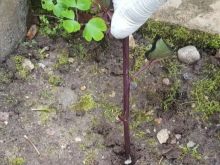

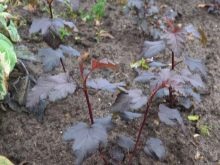
Variety selection
An important step in creating a hedge is to determine the species from the numerous list that is available to specialized stores and nurseries. This is a somewhat difficult process, since all varieties of the bubblegum are picturesque in their own way, but they have distinctive features - color and growth, requirements for care and soil for planting.
Certain species and varieties are especially popular among domestic gardeners.
- Kalinolistny - a collective name, which means about one and a half dozen varieties ("Summer Wine", "Diablo" and "Red Baron" - with spreading foliage of different colors, from glossy purple and dark cherry, acquiring a shade of old bronze in autumn, to wine metallic ).
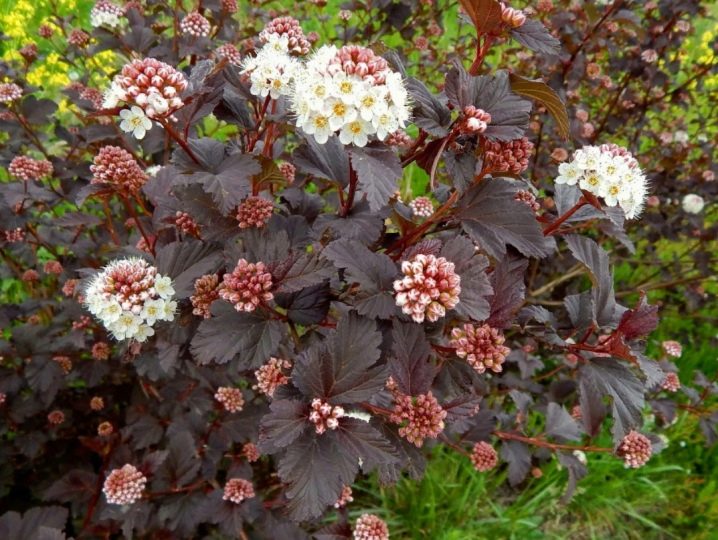
- "Lady in red" - one of the leaders in the demand rating, changes burgundy leaves in autumn to crimson or crimson.

- There are also more familiar shades for example, "Darts Gold" dissolves orange-yellow young leaves, which by summer already have a distinct lemon tone, and in autumn they also turn into bronze.
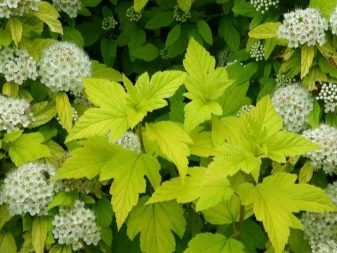
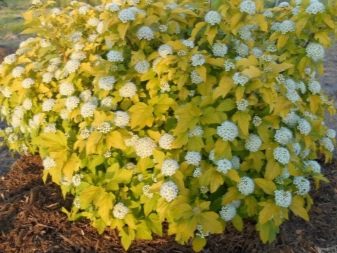
- Lovers of traditional tones will love the "Nugget", yellowish at first, and then transforming into green.

- "Aurea" - yellow in spring, in the cool season it acquires a beautiful golden hue.
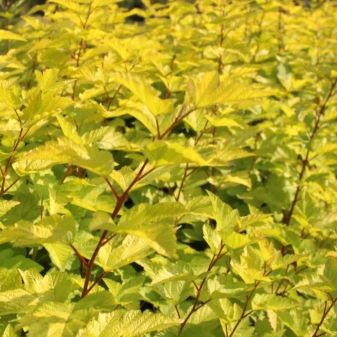
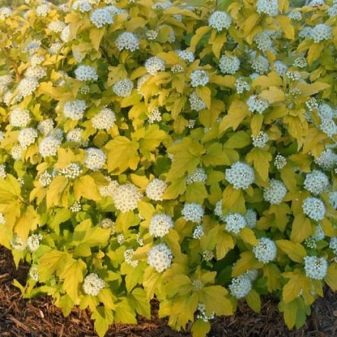
- An excellent option is considered "Nanus" - a shrub with dark green leaves and small white flowers, collected in spectacular, delicately smelling inflorescences. This is a well-known variety that does not reach a height of one and a half meters, which can often be found in public parks and squares.
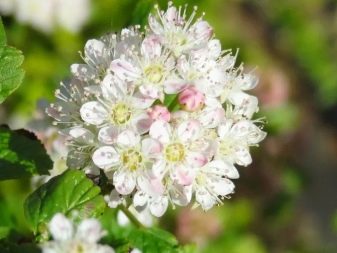
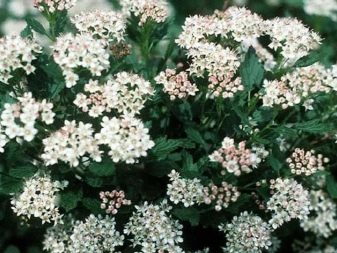
For a taller hedge, Summer Vine is suitable., reaching almost two meters in height, and for a more voluminous and decorative - "Red Baron", the bush of which can be up to 2 meters in diameter. The same volume and "Andre", with beautiful orange-yellow leaves.

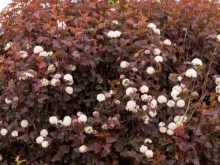

Little Angel – representative of dwarf varieties, it can be used for zoning in large areas near country houses. Its red-orange and crimson leaves by autumn stand out well against the background of the usual green tones of the lawn and trees, set off flower beds, ponds and garden paths. Fast-growing bladder bushes will allow you to cope with the task in a short time.

How to plant correctly?
Planting a popular ornamental shrub can be done by cuttings, layering and dividing the bush on various soils, with the exception of places with excessive moisture or seasonal accumulations of water. There are different ways to use the bladder in landscaping. It can be planted along the fence, which is often used in options with a wrought-iron fence.
Another option is to plant a single bush near a flower bed with perennials, a lawn or rockery. The landing pattern is determined by the goal that the decorator intends to achieve. Therefore, in special sources, you can find various developments and apply recommendations to achieve aesthetic visualization or the formation of a hedge as an obstacle to the penetration of outsiders:
- a hole is dug up to half a meter deep (if purchased plants with an already formed root system serve as planting material);
- experts advise mulching after planting so that a dense crust does not form on the surface;
- the distance between the bushes depends on the method chosen - a spreading hedge is obtained by choosing a step of 1.5 m and planting the bushes in single holes.

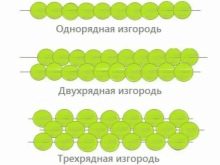
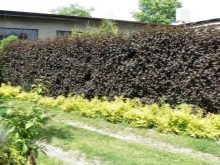
A dense hedge is obtained by planting bushes with a pre-disinfected root in a checkerboard pattern. The fence can be formed by digging a trench, which is pre-marked with measuring tools and pegs for an even row. There is one more note on the distance between plants. It can be made from 40 cm to a meter, but in a checkerboard pattern, you need to slightly increase the distance (15-20 centimeters). In this case, the hedge will turn out to be quite impenetrable, but the plants will not interfere with each other and will begin to grow at their inherent speed.
The survival rate of the shrub is excellent, but it can be brought to 100% only by fertilizing the soil mixture in the planting pit, watering the plant abundantly immediately after placing it in the pit and filling it with soil.
You should also disinfect the roots, if they are open, or treat with "Kornevin" to stimulate development in the soil.

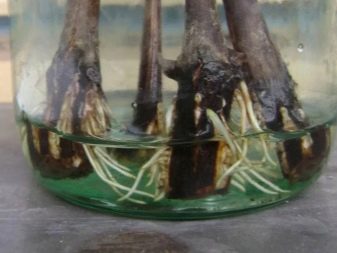
The nuances of care
General recommendations for planting a decorative and protective fence does not mean that some decorative varieties bred by breeders do not have special preferences that can become an obstacle for an inexperienced gardener. For example, self-seeding from seeds, which is quite intense in adult representatives of the species, can turn into a serious problem if there are vegetable or green beds nearby. Another important point: certainly good illumination of decorative species. By placing them in a shaded space, you can lose the unique shades of the foliage, which will turn into a banal green.
Watering and mulching
The mention of the bladder's dislike for excess moisture or seasonal stagnation of water does not mean that the plant does not need timely watering. It negatively perceives the shortage of water, but the irrigation conditions must be calculated according to the nature of the warm season. If it rains frequently, additional moisture is not required. In a dry summer, it is better to take care of the plant, add no more than 40 liters per week for an adult bush.
Mulching is considered mandatory immediately after planting, at the time of adaptation and survival of the root system.
Mature shrubs do not need to be mulched unless the grower wants to save time by loosening the soil and weeding. Mulch will retain water, prevent the soil from turning into a hard crust that is undesirable for plant development.
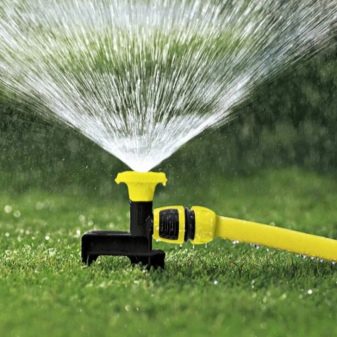
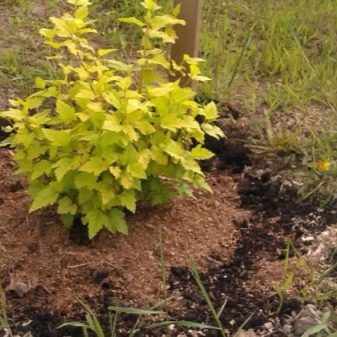
Top dressing
Held three times per season. The first, spring, is ideal in April, and this is a weak solution of nitrogen fertilizers. You can limit yourself to two - at the beginning of autumn, add superphosphate and potassium fertilizers. However, experienced gardeners immediately after flowering give the plant the opportunity to recuperate by buying a complex composition for flowering shrubs in specialized stores.
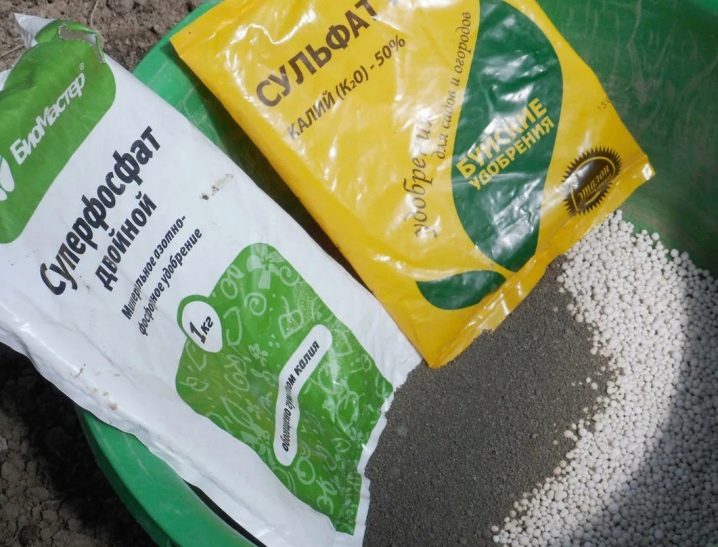
Wintering
Shelter is required if a cold and snowless winter is expected.
It is better to sprinkle young plants in the area of the root system with improvised materials or a thin layer of humus (10-12 cm is enough).

Treatment
The bladder is immune to fungi and infections, but you can spray the soil under the bushes and the plants themselves with a fungicide for prevention. There were no fundamental preferences in the choice of the preventive composition.
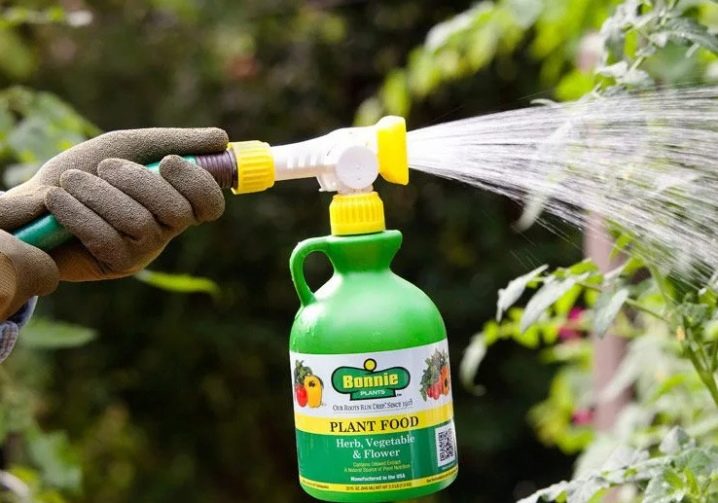
Pruning
The formation of a hedge is an important procedure, which is also simply necessary for a fast-growing shrub. Diameter, shape and height depend on the correct step-by-step trimming: post-planting pruning of shoots, spring pruning - skeletal and lateral branches, sanitary - every spring. From the fifth year of growth, the gardener has a vast space for the flight of imagination and the creation of variable configurations.

Beautiful examples
- A low-growth barrier fence along the wrought-iron fence is in perfect harmony with the selected fence color.

- A low-growing hedge outside a public building.
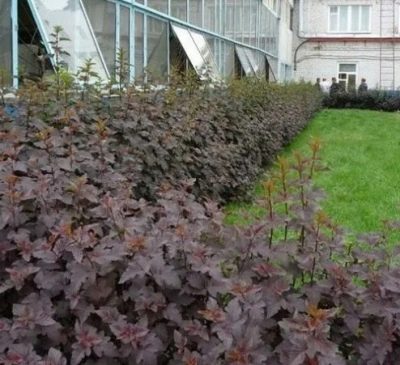
- The original bushes, formed in the form of a ball, are an additional highlight on a spacious suburban area.

- A beautiful multi-colored path in the garden, created from different types of shrubs.
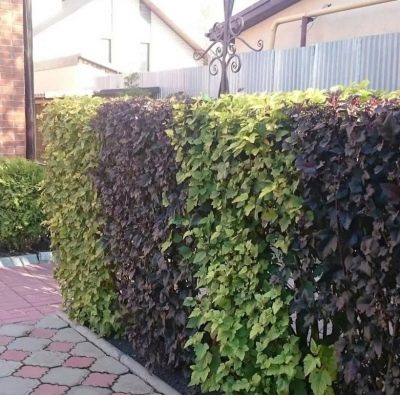
- The perfect landscape created by a landscape designer.
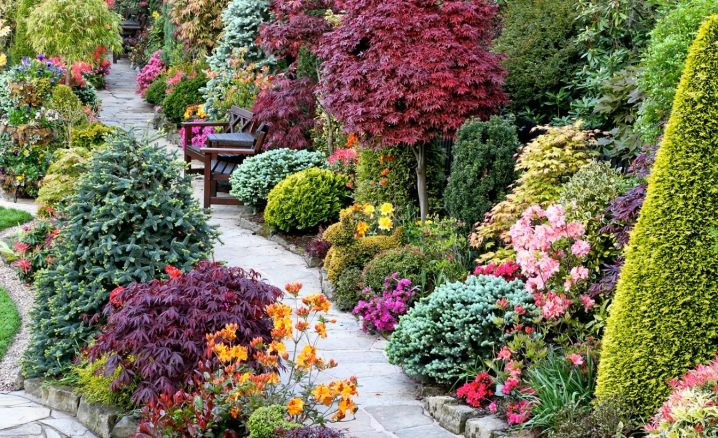































































The comment was sent successfully.